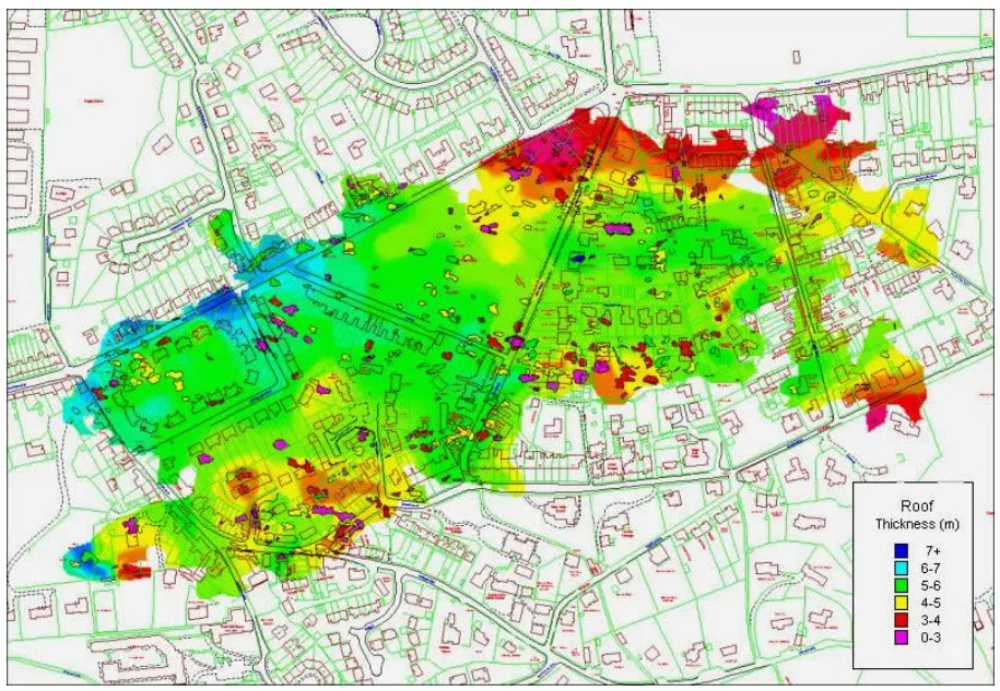Quarrying on Combe Down has taken place since the Roman era. John Leland travelling to Bath in 1540 noted quarries south of the city of Bath, and a larger quarry on his second visit a while later. Oluf Borch in 1663 mentions underground workings near Bath, both most likely at Combe Down. Lots of the open workings have now been filled and built over. The earliest date noted in the quarry marked on a sawn face is 1821.
This plan shows the extent of Firs Quarry which ajoined several others in the area – these have all been filled with an expanding concrete – the stabilisation operation took ten years to complete
A tramway was built in 1731 to carry the stone from the hills down to the canal wharf. The rails had a 3 ft 9 ins gauge. The wagons were built of stout oak timbers, they were three foot six inches wide and about 13 ft long, flat to carry blocks of stone, with short upright ends and long low detachable sides. They had four cast-iron spoked wheels with deep flanges and over 6 ins rims. Gravity and braking were used to convey the trolley’s to the Dolemead Wharf with horses to pull them back up again.

